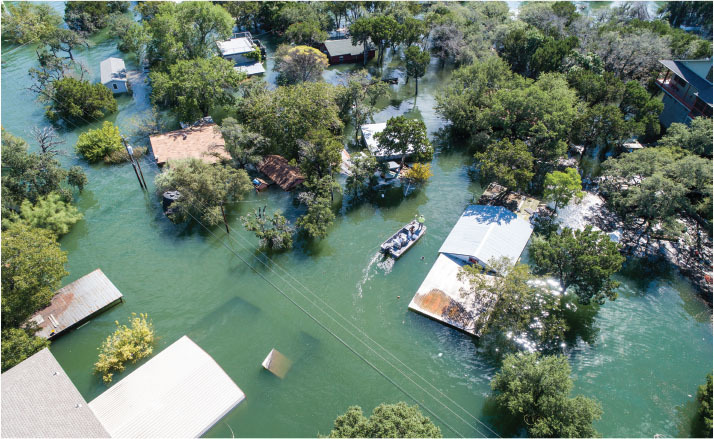July/August 2018
Concepts
Post Deepwater, PEs Have Important Role to Play
BY W. R. “RICK” FARMER, P.E., SPEC
 Eight years after the Deepwater Horizon explosion and oil spill in April 2010, the incident is widely used today as a case study on safety, ethics, regulation, and other topics. It also raised important questions about the role of the professional engineer in this kind of work.
Eight years after the Deepwater Horizon explosion and oil spill in April 2010, the incident is widely used today as a case study on safety, ethics, regulation, and other topics. It also raised important questions about the role of the professional engineer in this kind of work.
At the time of the incident, the operations of the oil companies, or operators, and the federal Mineral Management Service were loosely controlled by federal regulation 30 CFR 250. On well projects, the operator was required to report to the MMS the plan for drilling and abandonment, based on the regulation’s requirements. The MMS would review the request, and either approve or deny it. If denied, the operator could submit more information or change the request.
To minimize questions and get approval as quickly and as painlessly as possible, little of the “nuts and bolts” design work was submitted. Much of the process was done with verbal approvals over the phone, with a follow-up written submittal required. And much of the design work was done only for the actual drilling of the well, with little thought of finalizing the well for its entire lifecycle. It was always thought that the drilling case loads would be the worst-case loads that the well might see.
Then the Deepwater Horizon incident happened, with the loss of 11 crewmen, the sinking of the semisubmersible drilling platform, and the uncontrollable discharge of millions of barrels of oil into the Gulf of Mexico. That became the game changer for both the operator and the regulator.
Within the next six months, the MMS would go through several departmental changes and finally become the Bureau of Ocean Energy Management and, on the regulatory side, the Bureau of Safety and Environmental Enforcement (BSEE).
On December 15, 2010, NSPE recommended to the US Chemical Safety & Hazard Investigation Board that “licensed professional engineers have direct supervision over all engineering design, operations, and maintenance of offshore oil rigs.” The only problem with this good idea was that there were too few qualified professional engineers with the knowledge and the expertise in these areas to perform this service. Many of the operators and the regulators had few PEs on their staffs in an operational and design capacity.
Following the new federal requirements, which began to appear in law in 2014, a number of the older, more experienced engineers with 20–30 years of experience began to hit the books and study for the FE and PE exams. I was one of them.
Since the blowout, qualified and experienced professional engineers have served as the “checker” of staff engineers’ work, to ensure the work meets the standards of the new 30 CFR 250 regulations for both the drilling and the plug and abandonment of the offshore wells—before it is submitted to the BSEE for approval. And now a movement is underway to ensure that all new engineering graduates interested in the petroleum industry sit for the FE exam at least once. Those who do not pass it the first time are encouraged by the older engineers to try again, due to the exam’s importance for their future advancement.
PEs play an important role. They review the records of blowout preventer stacks and provide certification of shear calculations for any of the drill, work, or tubing strings that may require shearing at the BOP stack, prior to closing the blind rams in an emergency. The licensed engineer also works with the operator’s engineers to review cement testing, work with centralization modeling, and provide risk analysis for worst-case discharge models and all other models that the well may come under.
Finally, a number of federal regulatory staff engineers have also taken the path to become PEs, which has made their district and regional offices even stronger.
There are some problems, though, with the use of PEs. The licensed engineer does not have a federal license but is governed by the requirements of their state boards, and each state licensing board has its own rules. Further, since state licensing boards have no jurisdiction over the federal regulators nor the operators, there is no reporting board that PEs can go to in case of grievances. A four-year period that the engineer-in-training must wait to gain experience may be far too short for the experience required in the designing and certification of the newer, more severe Gulf of Mexico wells.
As the commodity pricing for hydro-carbons continues to increase and other projects become more financially feasible, more professional engineers will be needed, especially in the “great crew change” as the baby boomers leave the industry. Thankfully, the industry is moving in a better direction—much better than at the time of the Deepwater Horizon incident.
NSPE member W. R. “Rick” Farmer, P.E., SPEC, is a managing member of Double R Engineering LLC and a certified petroleum engineer by the Society of Petroleum Engineers. He is past president for the American Association of Drilling Engineers.
On July 19 at 3:00 p.m., Farmer will give a presentation on “The Role of the PE in Federal Waters” at NSPE’s Professional Engineers Conference in Las Vegas.



 Volunteering at NSPE is a great opportunity to grow your professional network and connect with other leaders in the field.
Volunteering at NSPE is a great opportunity to grow your professional network and connect with other leaders in the field. The National Society of Professional Engineers (NSPE) encourages you to explore the resources to cast your vote on election day:
The National Society of Professional Engineers (NSPE) encourages you to explore the resources to cast your vote on election day:



